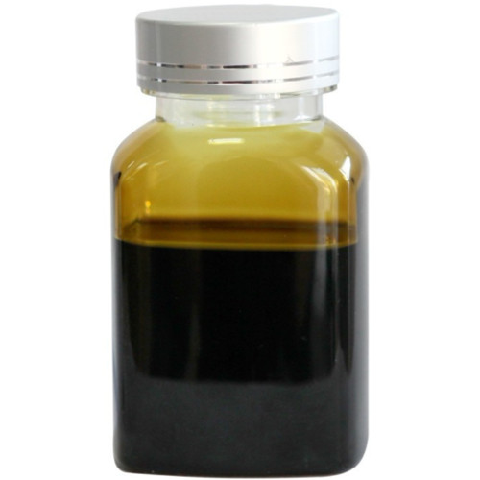Which is better, graphene battery or lead-acid battery?
Europe's largest economy, Germany, recently activated an emergency plan to manage gas supplies that the natural gas could be rationed if supplies are disrupted or disrupted by a stand-off over Russian demands to pay for fuel in rubles.
German Vice-Chancellor, minister of economy and climate protection, said Germany's gas supplies were secure for now, but he urged consumers and businesses to reduce consumption, saying "every kilowatt of electricity counts."
Germany's gas network regulator can ration gas if supplies run short. Plants would be the first to be affected. Special treatment will be provided to private families, hospitals, and other important institutions.
Half of Germany's 41.5 million households use natural gas for heating, and industry consumption accounts for a third of the country's 100 billion cubic meters of gas demand in 2021.
The price of many energy and commodities like the graphene battery could be affected.
A lead-acid battery (VRLA) is a battery whose electrodes are mainly made of lead and oxides, and the electrolyte is a sulfuric acid solution. In the discharge state of the lead-acid battery, the main component of the positive electrode is lead dioxide. The main component of the negative electrode is lead; in the charged state, the main component of the positive and negative electrodes is lead sulfate.
Which is better, graphene battery or lead-acid battery?
To know whether it is better to use a graphene battery or a lead-acid battery, we need to compare the performance of the two so that we can understand the advantages and disadvantages of the two batteries. Next, we will discuss the advantages and disadvantages of graphene batteries and lead-acid batteries. Compare price, service life, safety, battery life, and charging time to find the best battery for our use.
Price comparison
We said earlier that graphene batteries are an enhanced version of lead-acid batteries. Compared with lead-acid batteries, its lead plate is thicker, and graphene technology is added, which will make the price of graphene higher than that of lead-acid batteries. The price of acid batteries is slightly higher, but the price gap between the two is getting smaller and smaller. At present, the price of graphene batteries is slightly higher than that of lead-acid batteries by 10~20%.
Service life comparison
Since the graphene battery is an enhanced version of the lead-acid battery, the weaknesses of the lead-acid battery will be strengthened. The service life of the lead-acid battery is generally about 300 times of charge and discharge, while the number of times of charge and discharge of the graphene battery reaches about 500 times, which is much more used than the lead-acid battery. Of course, this is also related to the car owner's maintenance method and usage habits, but in theory, the life of the graphene battery is longer than that of the lead-acid battery.

Safety comparison
The production process and materials used for graphene and lead-acid batteries are the same. Graphene batteries only increase the thickness of the front plate and add graphene elements with better conductivity, so the comparison between the two in terms of safety. It is not apparent, and it can be said that the security performance of the two is the same.
Comparison of cruising range
Compared with the new lead-acid battery and the graphene battery, the cruising range of the two is similar. Still, as the use time increases, the graphene battery has a thicker lead plate, so its attenuation degree is smaller than that of the lead-acid battery. For example, if the battery is switched after one year, it only has 50~60% of the original capacity, while the graphene battery can reach 90% of the original capacity. With the prolongation of use time, the contrast will become more apparent.
Comparison of charging time
Since the graphene battery is added with a more conductive graphene element, and the graphene battery is also equipped with a special charger, the graphene battery can be charged faster, and it can be fully charged in about 5 hours, while our ordinary lead-acid battery It takes about 8 hours or so to fill up.
Although graphene batteries are just an enhanced version of lead-acid batteries and do not use accurate graphene technology, graphene batteries are superior to ordinary lead-acid batteries in terms of service life, mileage, and charging time, especially with The price gap between graphene batteries and lead-acid batteries is getting smaller and smaller. For car owners, it is pretty cost-effective to choose graphene batteries.
High-quality graphene battery manufacturer
Luoyang Moon & Star New Energy Technology Co., LTD, founded on October 17, 2008, is a high-tech enterprise committed to developing, producing, processing, selling, and technical services of lithium-ion battery anode materials. After more than ten years of development, the company has gradually developed into a diversified product structure with natural graphite, artificial graphite, composite graphite, intermediate phase and other harmful materials (silicon-carbon materials, etc.). The products are widely used in high-end lithium-ion digital power and energy storage batteries.
If you are looking for graphite or lithium battery anode material, click on the needed products and send us an inquiry:sales@graphite-corp.com.
Overall, the demand for graphene battery is on the rise, and future graphene battery will continue to evolve. Although the prosperity of the brand name has rebounded, there are still many outstanding problems in graphene battery, and the graphene battery will develop steadily,if you need graphene battery please contact us.
Inquiry us
PREVIOUS NEWS